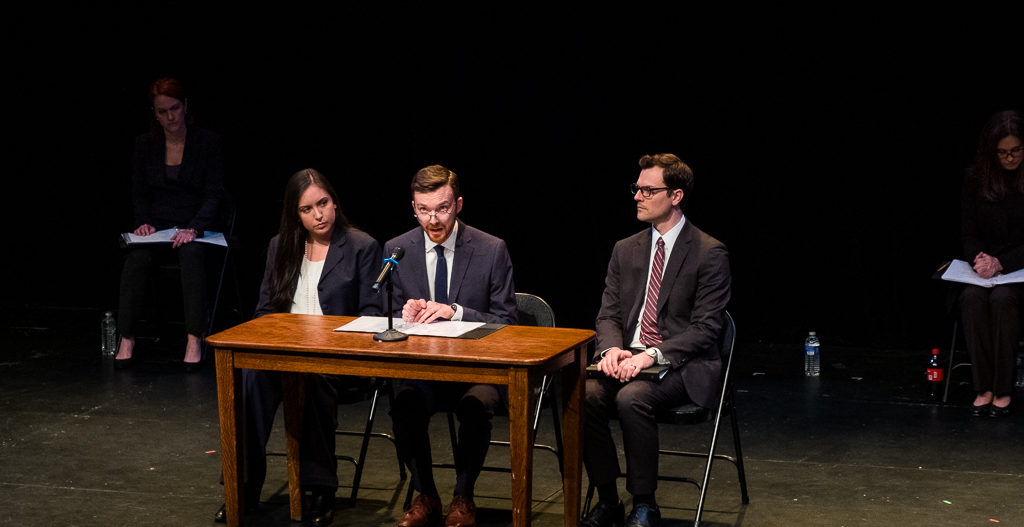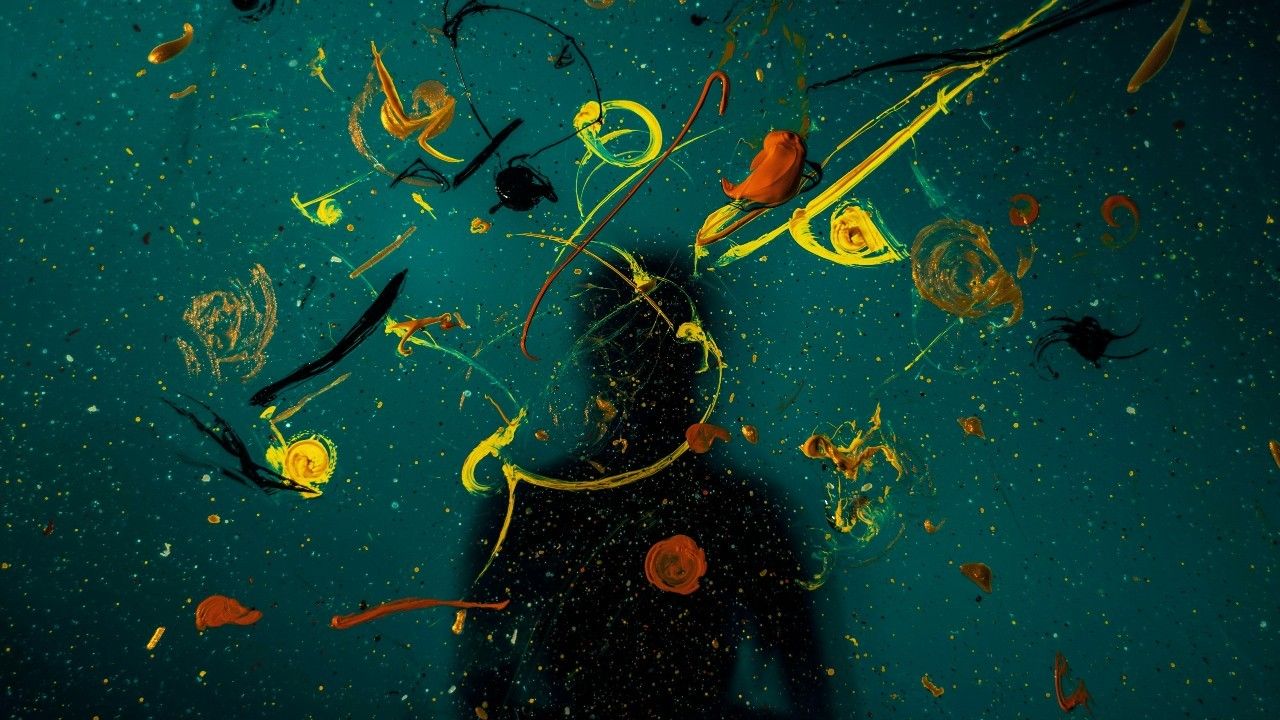In response to the Capitol insurrection on January 6, 2021, The Hechinger Report, a national nonprofit newsroom reporting on education, published “Can we teach our way out of political polarization?” The article displays responses from education professionals who propose how schools could create lessons aimed at minimizing political polarization in the U.S. Everyone seems to agree that the schools are not solely to be blamed for the increased polarization, but that educators could be doing more to tackle it. The two authors of “The Political Classroom,” Diana A. Hess and Paula McAvoy highlight in the report that “the interplay between what students bring into the classroom and what they experience in school is complex and does not lend itself to easy or definitive answers” (from website above). The reported possible solutions include a better understanding and dismantling of white supremacy, a more robust civic media literacy curriculum, and generally, a more honest re-telling of our nation’s history.
All these solutions fall under one category: qualitative literacy. According to Dr. Mario Small, the Grafstein Family Professor in the Department of Sociology at Harvard University, there is a qualitative learning deficit in the U.S. In a 2019 Spencer Foundation talk, “Rhetoric and Social Science in a Polarized Society,” Dr. Small explained that students are taught more about analyzing and interpreting quantitative data, while the skills to analyze and interpret qualitative data are underdeveloped. From the talk, qualitative literacy is defined as “The ability to understand, handle, and properly interpret qualitative evidence — specifically, ethnographic and interview evidence or data” (from website above). He references white supremacy culture and the surplus of fake news as evidence that change is needed. This lack of qualitative analysis, Dr. Small argues, has contributed to polarization in the U.S.
The value of quantity over quality in the U.S. is not new. In 2001, Kenneth Jones and Tema Okun from the ChangeWork training group published “Dismantling Racism: A Workbook for Social Change Groups,” which now can be found on the updated website. It is composed of a list of characteristics that make up white supremacy culture followed by a list of antidotes. One of the characteristics of white supremacy listed is quantity over quality. One of the proposed antidotes is to “include process or quality goals in planning” (from website above). Because white supremacy culture is woven into the fabric of the nation’s institutions, it is no surprise that it plays a major role in the current political polarization as referenced by the above leaders in education and social science.
What tools do educators and those looking to educate themselves have to practice qualitative analysis? This article explores how NYU Steinhardt’s Verbatim Performance Lab (VPL) prioritizes qualitative analysis and interpretation in an engaging way, how it can be a useful tool in the classroom to counteract polarization, and how the team strives for successful leadership that opposes white supremacy culture.
Since 2017, the Lab has worked with students and professional artists in a variety of educational and community-based settings. As the name suggests, the main tool the Lab uses is verbatim performance, or the precise portrayal of an actual person using their exact speech and gestural patterns as a data source for investigation, literally “word for word” & “gesture for gesture.” This definition and others relating to VPL’s process can be found on VPL’s F.A.Q. page. Their mission statement is: “The Verbatim Performance Lab (VPL) creates verbatim documentary theatre performances and investigates the results with actors and audiences. We perform words and gestures collected from found media artifacts and interview-based data. Through the investigations of these performances, VPL aims to disrupt assumptions, biases, and intolerances across a spectrum of political, cultural, and social narratives.” By both “performing” and “investigating,” the Lab’s work lives in the intersection between research and theatre.

While working and studying with VPL in the summer of 2021, I saw first-hand the meticulous preparation work necessary for each investigation. In his three-week course “The Ethnoactor & Verbatim Performance,” Joe Salvatore, Creator and Director of VPL, introduces ethnoacting. Coined by drama therapist Darci Burch, this acting technique is not typically taught in conservatories or most theatre schools. Published in 2019 on ArtsPraxis, Burch’s article, “The Ethno-Actor: Encompassing the Intricacies and Challenges of Character Creation in Ethnotheatre,” she writes that the ethnoactor “is challenged to create a portrayal that maintains the dignity of and respect for the interviewee while maintaining room for new discovery of knowledge and understanding”. In Joe’s course, each student practices ethnoacting and selects an excerpt of someone speaking from a viewpoint different from their own. They study the words and gestures of this other person with the intention that through performing the other in precise detail and documenting the process, the ethnoactor will discover more about the other’s lived experience.
At the end of the class, and particularly this year because we had to record them on video due to the COVID-19 protocols, each student performs in an artifact, which is a verbatim performance of the excerpt they selected. In years prior, these performances would be live in the classroom. The most important part, however, is the discussion that follows. In the course, much of the discussion took place in the form of a final paper or recorded journal entry. The students reflected independently and briefly in the group on their processes, observations, and discoveries. All the projects at VPL incorporate more time for the post-performance discussion than the performance itself. In the theatre, the creative team would facilitate this type of dialogue with the audience. In the classroom, the teacher would facilitate this type of dialogue with their students.
Talk-backs or post-show discussions are common in the theatre, but VPL does it differently. The following is a list of what makes VPL’s process an effective tool in teaching qualitative literacy. Each point will also be cross referenced with how I think it aligns with the antidotes to white supremacy culture.

Nuance
When asked about nuance at VPL, Joe responded with “part of the reason our website and branding color scheme is black, white, and grey is to emphasize that we’re working in the grey areas of analysis and interpretation.” This grey area signals that the team is “less interested in changing people’s minds about what they believe and more interested in helping people understand why they believe what they believe.” Externally, the ethnoactor must pay close attention to nuanced facial expressions, physical gestures, and vocal patterns. Internally, the ethnoactor is challenging their own positionality and implicit bias. VPL calls this the “Stance of the Researcher” or the reflection and acknowledgement of one’s lens. Later, the audience will participate in a similar investigation as they watch the ethnoactor perform someone of a different identity, whether that be difference in race, ethnicity, class, gender, gender identity, age, sexual orientation, and/or ability. VPL performances, therefore, introduce complexity by casting across difference, but the post-performance discussion gives sufficient time and space to dissect these complex layers of identity. Joe refers to this as “slowing down a viewpoint so that it can be analyzed more effectively.” These discussions could certainly be a challenge if the classroom time is limited. However, verbatim performance projects can be scaffolded into the curriculum and stretched out over many days, weeks, or even months. Altogether this dedication to the “grey areas of analysis and interpretation” works as an antidote to what the “Dismantling Racism” workbook labels as “sense of urgency” and “one right way.” The time spent in these investigations and performances are about critically and meditatively engaging in complexity, rather than attempting to find a single right answer to solve it.
Transparent Goals & Purpose
I would argue that the reason nuance flourishes in VPL post-performance discussions is because the team puts forth clear goals and boundaries for each investigation. For larger projects centered around complex themes, such as polarization, the VPL team makes sure to have one research and one focus question at the start of the investigation process. In the course, I learned that the research question is what the ethnoactor hopes to learn from the investigation. The focus question is what the ethnoactor wants the audience to be considering as they watch the performance and to engage in dialogue around after the performance. Then, after interviewing a diverse population in terms of both demographics and viewpoints, the creative team selects the interview excerpts to be performed, otherwise known as portraits, that best resonate with the research and focus questions. If the project is about a well-known person and the text is taken from archives or an Internet source, this is called a media artifact. Whether from a portrait or a media artifact, a narrative arch is finally orchestrated out of the chosen text to theatrically present the data. However, this type of narrative is not meant to sweep the audience into an imaginative world of the performance. It is a rather an example of Brecht’s Verfremdungseffekt or defamiliarization. With minimal stage design, signs that denote the interviewee’s chosen identifier, direct address to the audience, and the ethnoactor’s awareness of both self and the person they are performing, the audience is challenged to critically think about the implications of the project. With transparent goals from the beginning that are reflected in this more presentational performance style, the post-performance discussion hits the ground running and creates an inclusive space for active dialogue. The focus of the dialogue is on an exchange of diverse thoughts, which works against what the “Dismantling Racism” workbook labels as “individualism.” Not only is there a shared purpose in the room via the research and focus questions, but there is also shared language provided by the performance that each audience member can use later to discuss their own analysis and interpretation of the data.
Embracing Discomfort
Continuing in line with Brecht, although a VPL performance is inclusive and engaging, it is not necessarily comfortable and easy-going. On both sides of the stage, the ethnoactors and the audience members must embrace the discomfort that is likely to arise from the verbatim performance. This discomfort is most likely a reason why it is difficult to teach civics and politics in the classroom. Discomfort is also outlined in the “Dismantling Racism” workbook in characteristics such as a “fear of open conflict” and “defensiveness.” VPL works against fear of conflict and defensiveness by curating a culture that investigates why people feel discomfort. Joe defines the discomfort that is typically experienced by ethnoactors and audience members as “cognitive dissonance.” When ethnoactors perform portraits across race or gender, for example, VPL uses this opportunity to discuss implicit bias. Does an observer react differently to the same content if the race or gender of the ethnoactor is different than the interviewee? In the classrooms where VPL practices are used, teachers lean into this cognitive dissonance to teach students how to be critical thinkers when participating in a democratic society. These discussions exercise qualitative literacy and may have the potential to challenge a student’s view of, for example, a presidential candidate. This specific example was investigated in the Off Broadway production of Her Opponent, the popular gender-reversed performance of the 2016 U.S. Presidential Debates created by Professor of Economics at INSEAD, Maria Guadalupe, and Joe, which catalyzed the formation of VPL.
Power Sharing
When Joe reflects on the type of leadership he strives for, it is one that shares power with everyone in the room. In the creative process, the team is usually co-led by Joe, Associate Lab Director Keith R. Huff, and Artistic Associate Tammie L. Swopes. Groups of interns and students are typically brought on board to conduct interviews and transcribe. Collaborators with lived experiences related to the chosen theme are consulted to ensure the process is equitable and ethical. Then, the ethnoactors who are cast also have the freedom to analyze and interpret the work, which informs the overall performance. Finally, at VPL post-performance discussions, the creative team partners with selected field professionals to facilitate conversations with the audience, which reveals that the Lab never aims to hoard power, but rather encourages a diverse group of voices to analyze and interpret the data together. This is like when teachers aim to be the “guide on the side” rather than the “sage on the stage.” This could also be seen as an antidote to what the “Dismantling Racism” workbook labels as “paternalism” and “power hoarding.” The power structure is clear at VPL, and everyone involved in the investigation has clear roles. Further, all the work from conception to post-performance discussion is in service of the mission of VPL “to disrupt assumptions, biases, and intolerances across a spectrum of political, cultural, and social narratives” in the hopes of gaining a deeper understanding of “why a person believes what they believe.”
To conclude, VPL’s work encourages a deeper understanding of one’s own worldview as well as the worldviews of others. The skills to deconstruct and qualitatively analyze and interpret the full spectrum of beliefs is needed. Considering the work necessary to dismantle white supremacy culture and dampen the current rise in political polarization that is entrenching the nation, the work that VPL does is critically important. If you are interested in participating in, following, or bringing VPL’s work to your school, more information can be found on their website: https://steinhardt.nyu.edu/verbatimperformancelab. Their most recent investigation took place just before Constitution Day on September 16, 2021, exploring how the First Amendment resonates now given the Jan 6th event and cancel culture.
Kate Foster is an MFA Dramaturgy student at Columbia University School of the Arts.
To learn more about The Civilians and to access exclusive discounts to shows, join our email list at TheCivilians.org.
Author
-

Kate Foster is a D.C.-based dramaturg working in international and intercultural theatre. She trained with international artists abroad in Moscow, Russia (Moscow Art Theatre School), Munich, Germany (Ludwig Maximilian University, DAAD grant recipient), and Florence, Italy (IUGTE–International University Global Theatre Experience). She was a literary manager for Columbia University’s School of the Arts International Play Reading Festival in 2020 and a Student Fellow at Georgetown University’s Laboratory for Global Performance & Politics during the 2020/2021 academic year. Currently, she is a dramaturg for VPL’s upcoming Constitution Day project as well as assistant director of ExPats Theatre’s Pankrác ‘45. MFA Dramaturgy Candidate 2022, Columbia University. MA German and BA Theatre and German, Wayne State University.
View all posts









